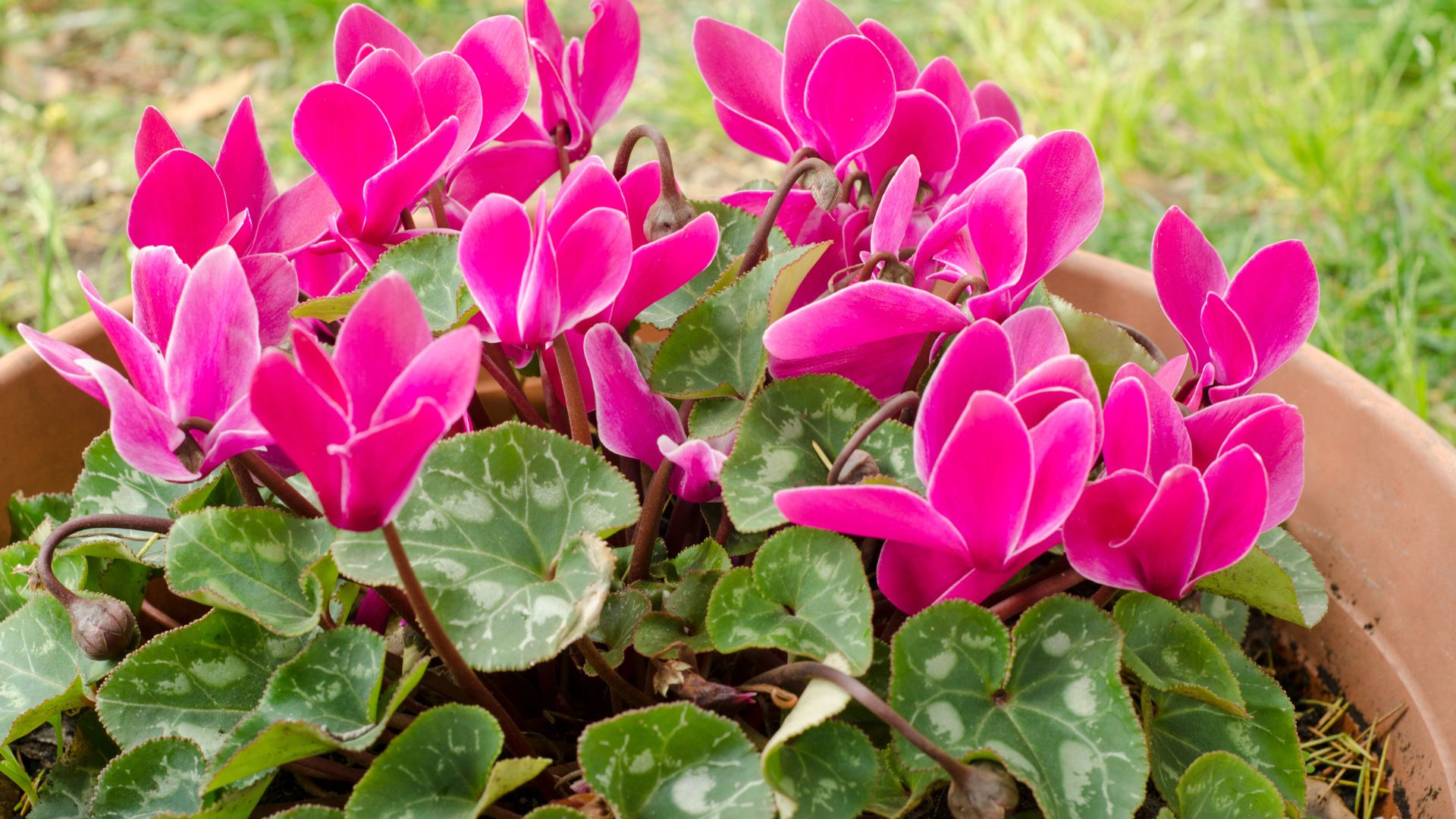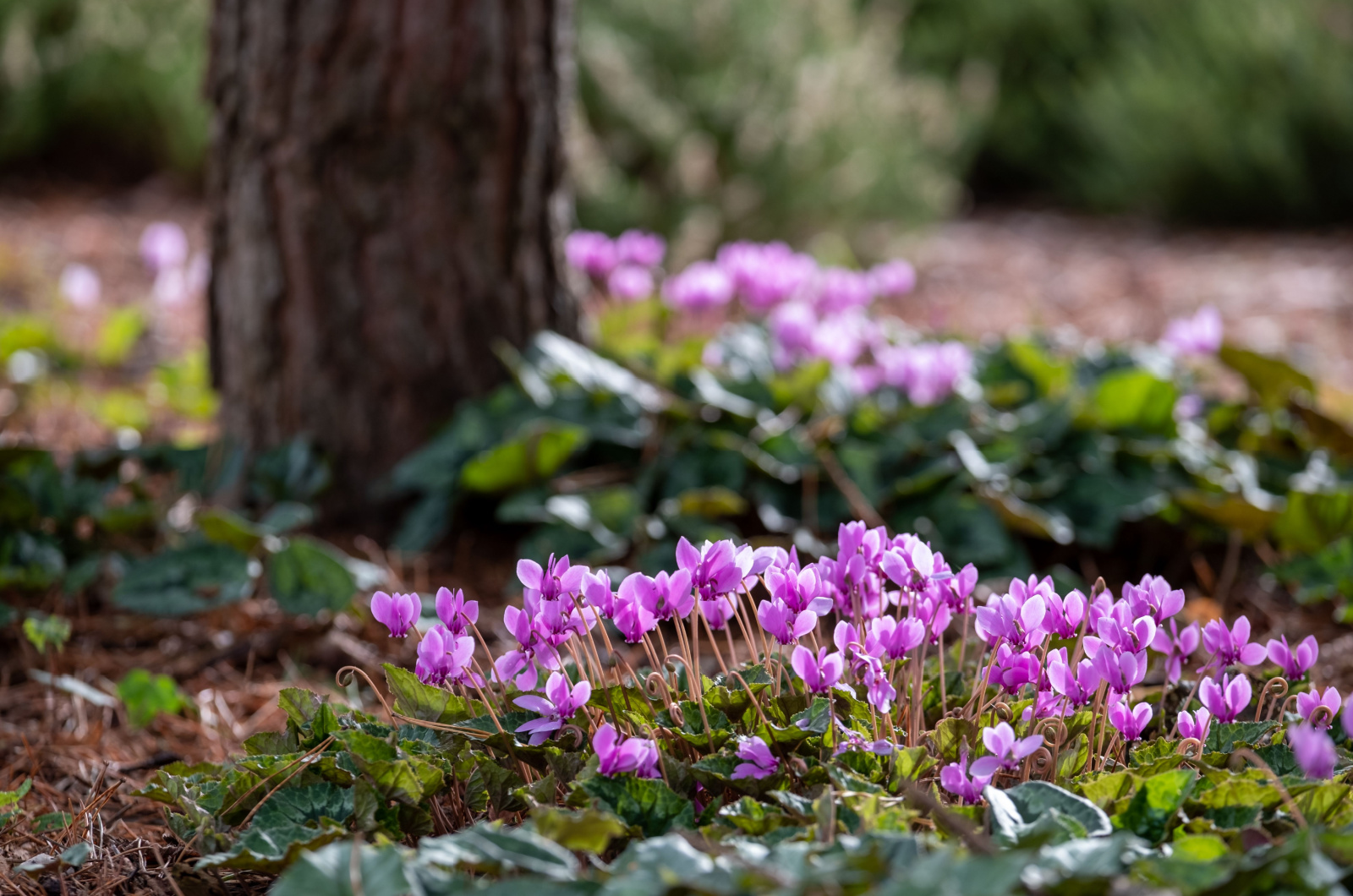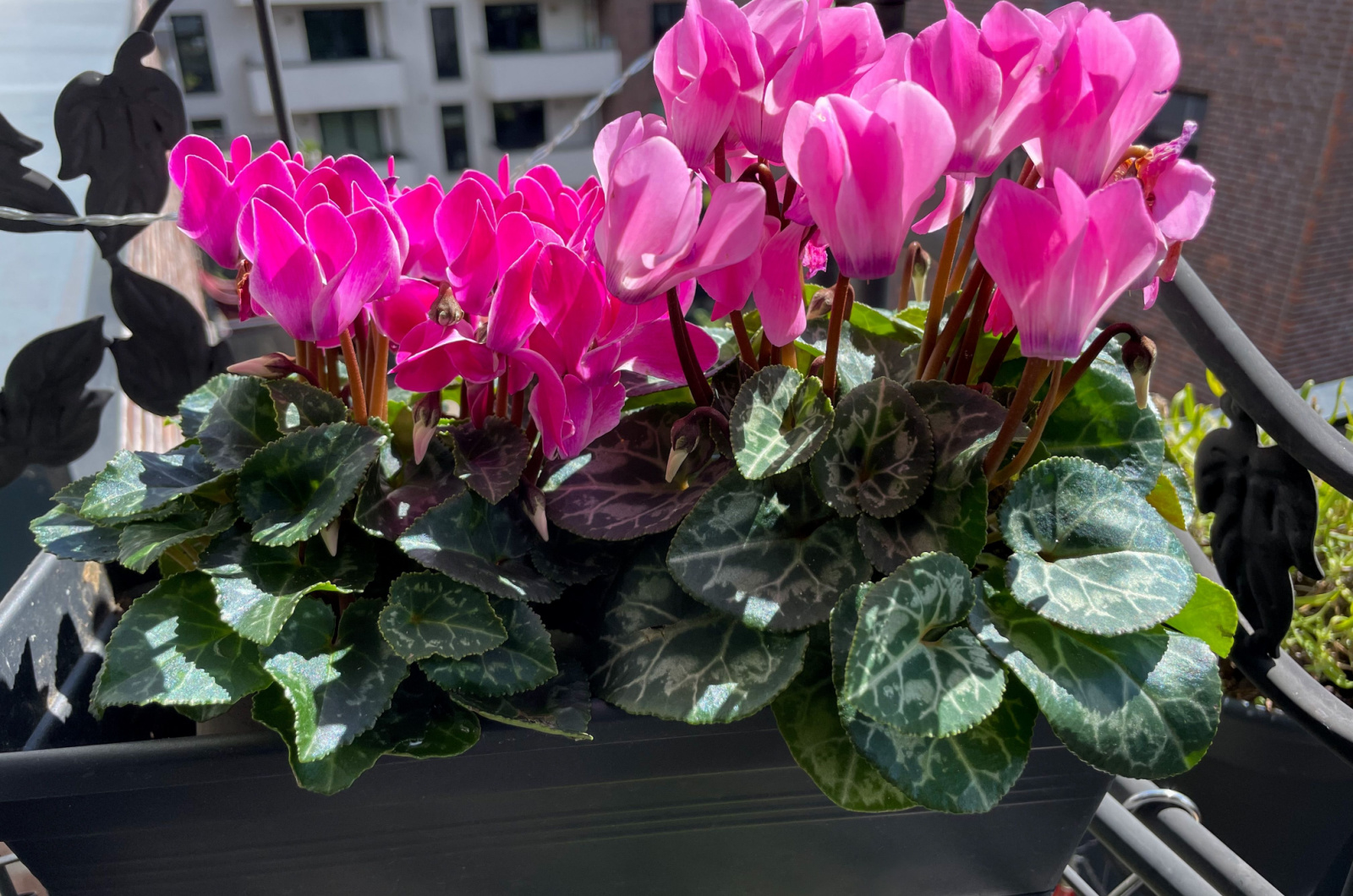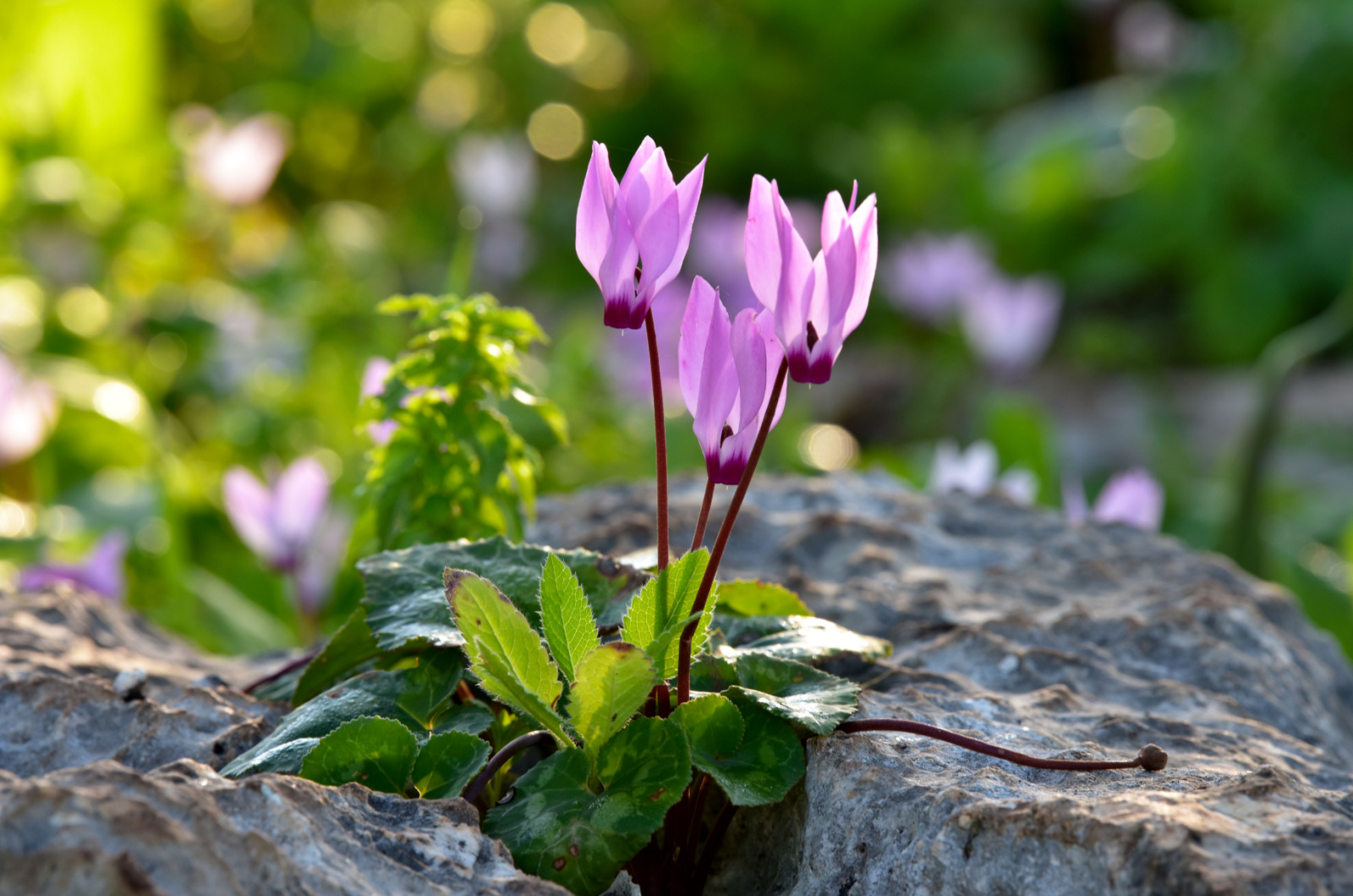While most houseplants thrive in spring and summer, some green companions are at their best when the frost settles in. This includes our underrated winter hero, the magnificent flowering cyclamen.
When every other plant is taking a break, the rebellious cyclamen steals the show and produces vibrant flowers along with lovely heart-shaped leaves.
In this article, we are going to talk more about cyclamen plants and explain how to take care of them. Let’s dive in!
More About Cyclamen
Cyclamen are colorful flowers that usually grow during fall and early spring. They originate from hot and dry Mediterranean regions, although they are very well-adapted to living indoors. Other names for cyclamen include sowbread, Persian violet, and shooting star.
These lovely plants produce round- or heart-shaped, bushy leaves with unique silvery patterns. The pink, purple, or red flowers rise above the leaves and bloom for up to three months.
Cyclamens are perennial plants that will bloom year after year, so you don’t have to worry about replanting them every season.
You can easily find them in garden shops, nurseries, and at home centers during the holiday season. It’s better to buy mature plants because they take some time to grow.
When Do They Go Dormant?
While spring is the time when nature awakens and most plants start growing again, your little cyclamen is now taking a break and going dormant. You’ll notice that the leaves will turn yellow and white, and most of their flowers will fall off.
Your cyclamen might look dead, but their underground tubers are packed with nutrients and they are keeping your precious plant alive!
If you can’t tell the difference between a dead and dormant cyclamen, you can simply check the tubers – if they are firm, all is well. A tuber that is limp, shriveled, or mushy indicates that your cyclamen is not healthy.
Please note that cyclamen are toxic to both humans and pets. If ingested, they can cause issues like diarrhea, nausea, and vomiting. So, keep them away from pets and children!
Cyclamen Plant Care
Don’t worry, it’s quite easy to take care of these winter wonders!
All you have to do is provide it with well-draining soil, bright indirect sunlight, some watering, and fertilizer to keep it happy and healthy.
Nonetheless, we will discuss plant care in more detail. So, let’s dive in!
Water Requirements
Balancing watering is important so you don’t end up with over- or under watered cyclamen. However, they do appreciate consistent moisture during their growing period, which is why it’s best to water them when the soil surface feels dry.
You should practice bottom watering as wet leaves attract fungal issues. Don’t water your cyclamen as much during the dormant phase – leave the soil to completely dry between watering sessions.
You might be interested in: Pros And Cons Of Using Rice Water For Plants + The Best Method
Soil Requirements
A well-draining potting mix is essential. A blend of potting soil, peat moss, and perlite is ideal. Cyclamen prefer slightly acidic soil with good aeration. You can also add a little bit of sand to improve drainage.
Also, make sure that your cyclamen grows in a pot with drainage holes in the bottom!
Light Requirements
Put your indoor cyclamen in a place with bright, indirect light. Place them near a window with filtered sunlight or under fluorescent lights if natural light is limited. I would recommend a north or east-facing window.
Whatever you do, make sure to avoid intense direct sunlight as it can completely burn your precious little plant.
Fertilizer Requirements
During the blooming period, feed your cyclamen every 2-4 weeks with a low-nitrogen fertilizer. Then, you should switch to a balanced, water-soluble fertilizer during the growing season. Reduce or stop fertilizing when the plant goes dormant in the summer.
Temperature Requirements
Cyclamen favor cool temperatures, typically between 50 and 60 degrees Fahrenheit. Keep them away from drafts and extreme heat, which can cause stress and affect their blooming. Bring them indoors if temperatures drop below 50 degrees.
Pruning
You should pinch or snip off the spent flowers at their base and encourage the plant to produce more flowers. Also remove yellowing or dead foliage with a gentle tug or by cutting it at the base to keep the plant looking fresh.
If the plant becomes leggy over time, prune back the leaves by up to one-third of their length to maintain a compact, bushy appearance. During the dormant stage, trim back any remaining leaves to about 1 inch above the tuber.
You might also be interested in: 25 Best Types Of Indoor Palm Trees To Improve Your Decor




